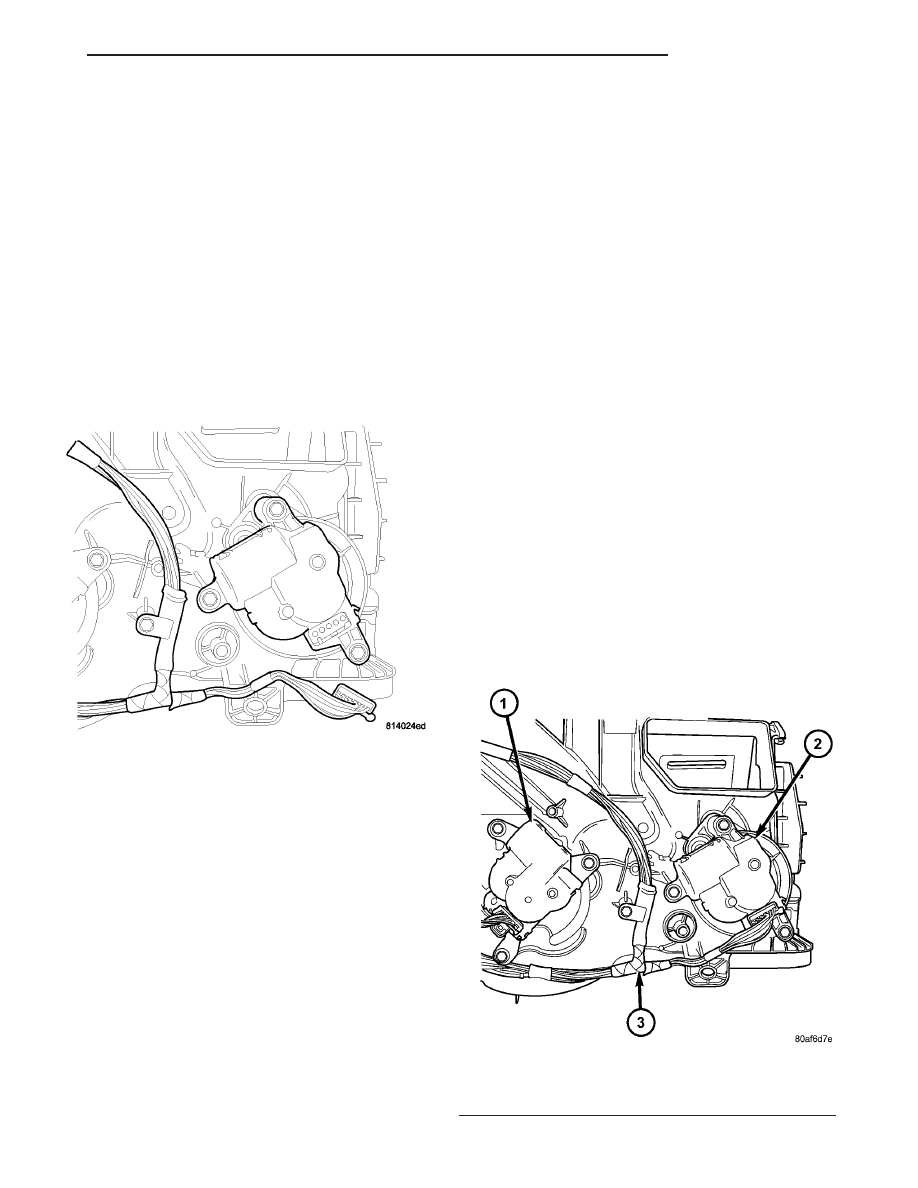Chrysler Sebring, Stratus sedan, Sebring Convertible. Manual - part 733

MODE DOOR ACTUATOR
DESCRIPTION
The mode door actuator (Fig. 39) is a reversible,
12-volt direct current (DC), servo motor which mechan-
ically positions the mode-air doors. The mode door
actuator is located on the bottom of the HVAC housing.
The mode door actuator is interchangeable with the
actuator for the blend-air door. Each actuator is con-
tained within an identical black molded plastic housing
with an integral wire connector receptacle. Each actua-
tor also has an identical output shaft with splines that
connect it to its respective door linkage and three inte-
gral mounting tabs that allow the actuator to be
secured to the HVAC housing. The mode door actuator
requires mechanical indexing to the mode door linkage.
OPERATION
The mode door actuator is connected to the body
control module (BCM) through the vehicle electrical
system by a dedicated five-wire lead and connector of
the HVAC wire harness. The mode door actuator can
move the panel-air door and the floor/defrost-air door
(mode-air doors) in two directions. A potentiometer
within the actuator allows the BCM to know the
exact position of the mode-air doors at all times.
The mode door actuator can be diagnosed using a
DRBIII
t scan tool. Refer to Body Diagnostic Proce-
dures for more information.
The mode door actuator cannot be adjusted or
repaired and, if faulty or damaged, it must be replaced.
REMOVAL
WARNING: On vehicles equipped with airbags, disable
the airbag system before attempting any steering
wheel, steering column, or instrument panel component
diagnosis or service. Disconnect and isolate the nega-
tive battery (ground) cable, then wait two minutes for
the airbag system capacitor to discharge before per-
forming further diagnosis or service. This is the only
sure way to disable the airbag system. Failure to take
the proper precautions could result in accidental airbag
deployment and possible personal injury or death.
(1) Disconnect and isolate the negative battery cable.
(2) Remove the left lower silencer panel and
instrument panel trim cover (Refer to 23 - BODY/IN-
STRUMENT PANEL/INSTRUMENT PANEL TRIM -
REMOVAL).
(3) Remove the push pin that secures the kick
shield to the instrument panel near the accelerator
pedal and remove the shield.
(4) Remove the three screws that secure the mode
door actuator to the bottom of the HVAC housing
(Fig. 40).
NOTE: When removing the actuator, note the posi-
tion of the actuator shaft and its respective linkage
for installation reference.
(5) Remove the mode door actuator from the HVAC
housing and disconnect the HVAC wire harness con-
nector from the actuator.
Fig. 39 Mode Door Actuator
Fig. 40 Mode Door Actuator
1 - BLEND DOOR ACTUATOR
2 - MODE DOOR ACTUATOR
3 - HVAC WIRE HARNESS
JR
CONTROLS
24 - 31